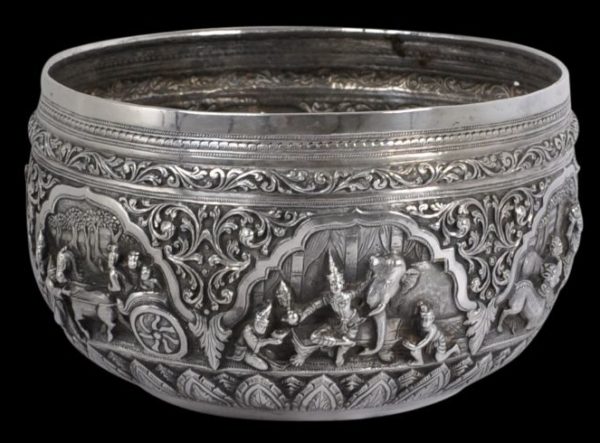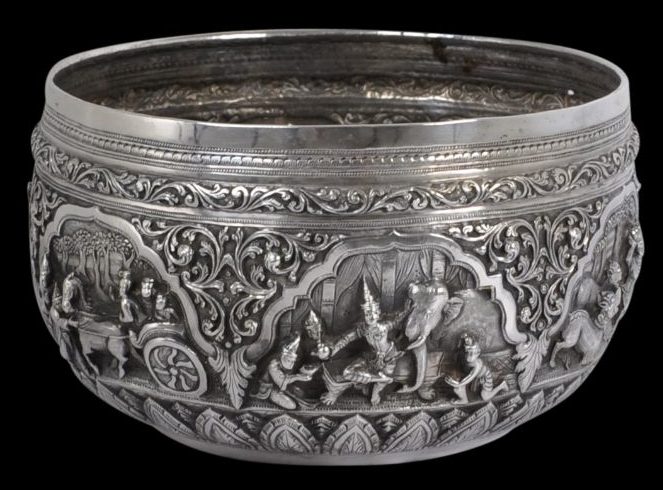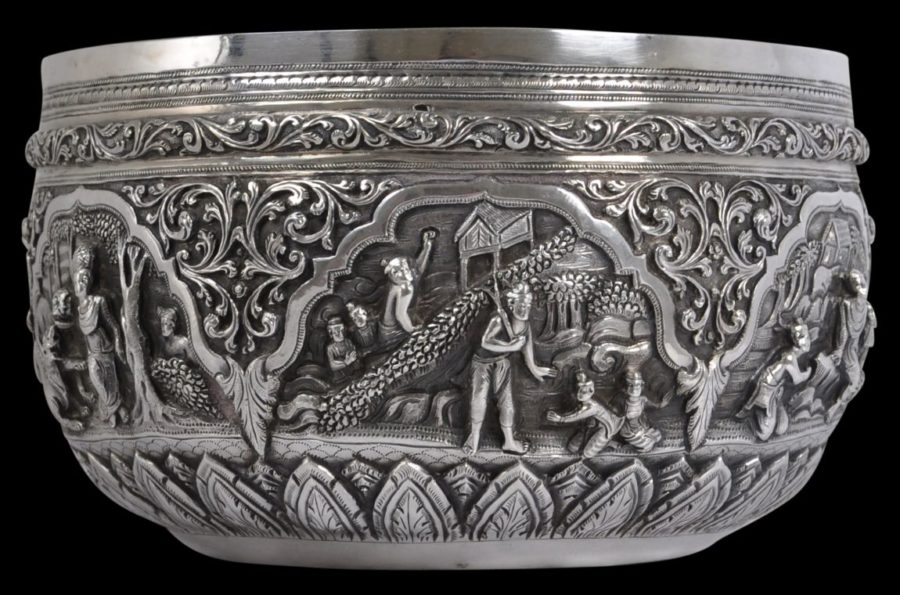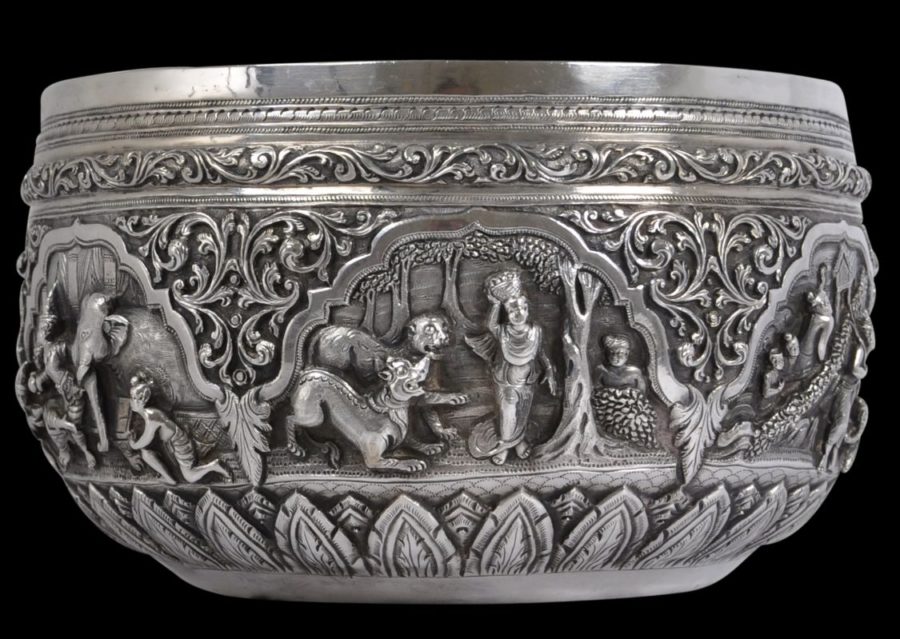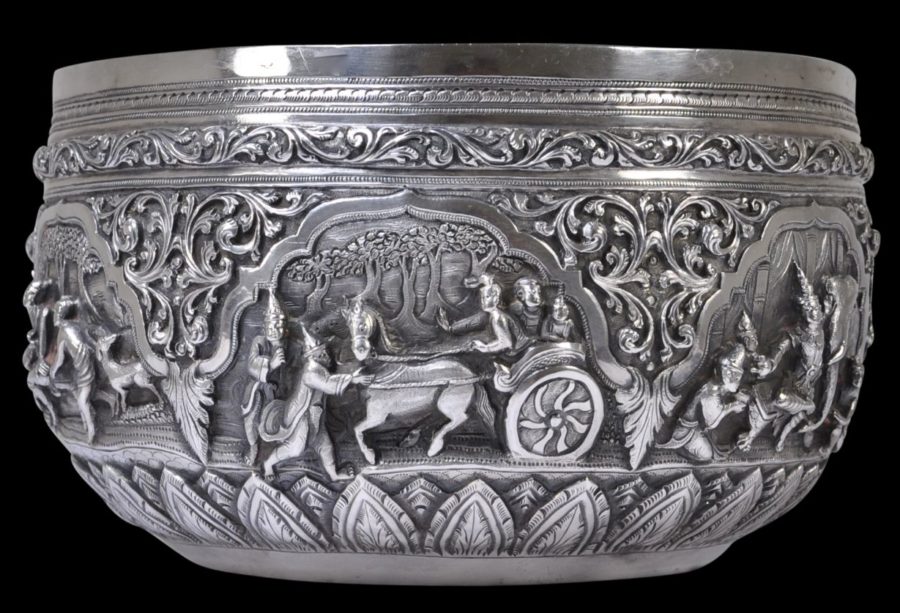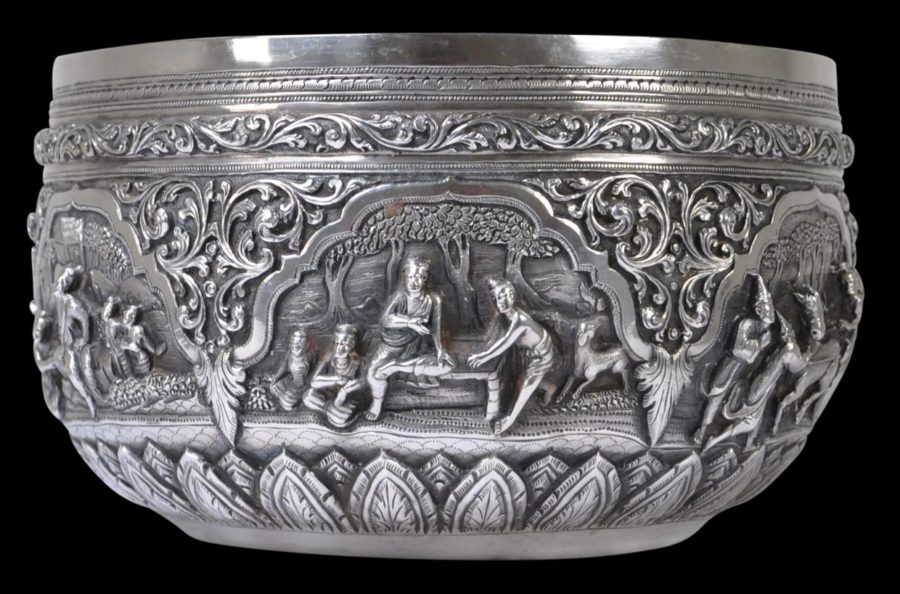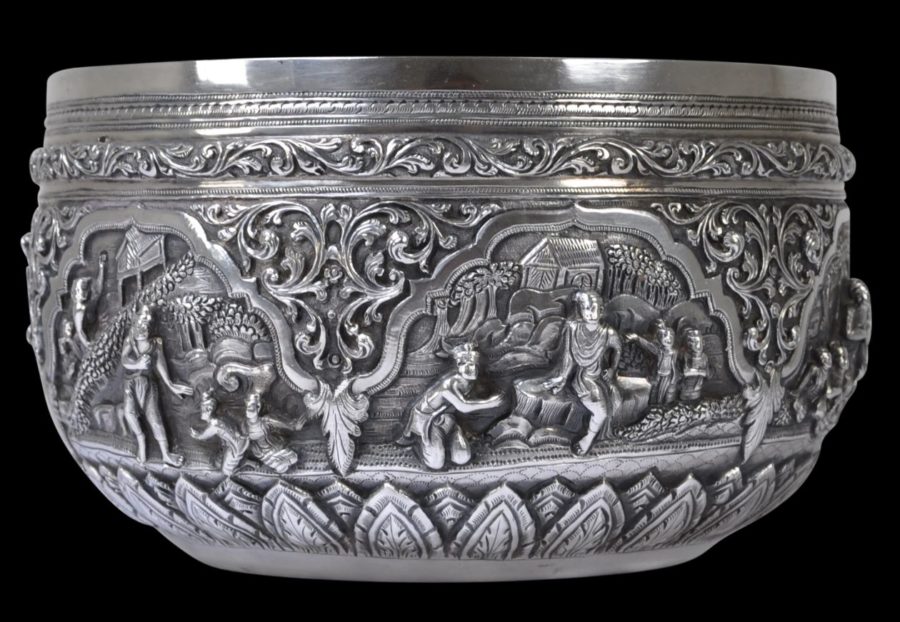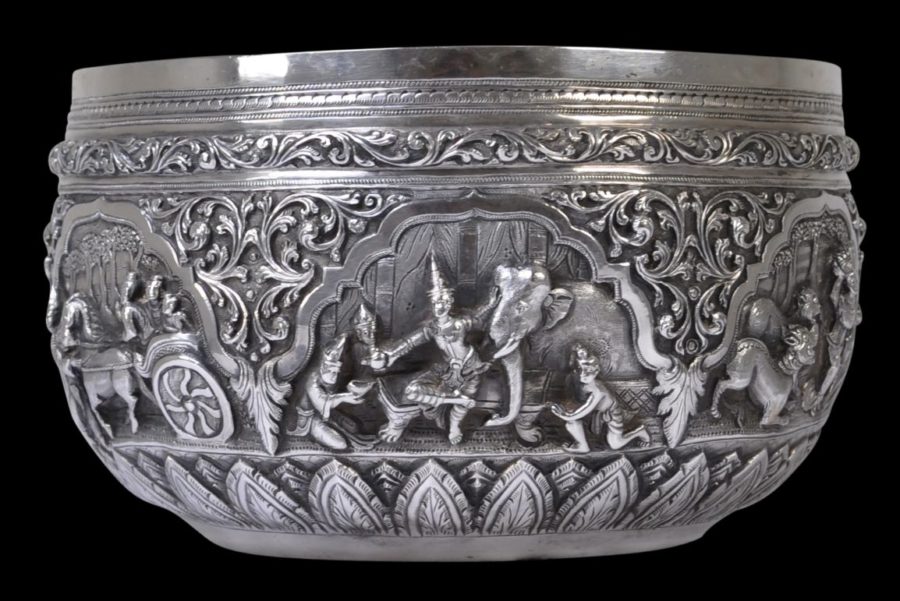This Burmese bowl is repoussed and chased with various panels of scenes of multiple figures in Burmese dress, all in high relief. The scenes include Burmese chinthei lions, elephants and so on, separated by wide, pendant panels of interlaced vegetal scrolling.
The bowl is based on the famous Vessantara Jataka, the last of the Jataka series (no. 547) and the most well known. The scenes include Vessantara’s giving away his elephant to Brahman; another where he is about to about to give away his horse cart; and another where animals prevent Vessantara’s wife from preventing him from giving away the couple’s two children.
The lower frieze comprises a wide band of finely rendered, repeated leaf motifs.
The upper frieze comprises a raised band of stylised orchid scrolling.
The base is plain.
Bowls such as these had no ceremonial or religious use; they are purely decorative. Their shape is supposedly based on Burmese monks’ begging or alms bowls (one of the eight parikkharas or possessions allowed a monk). Such a monk’s bowl is known as a thabeik in Burma. In turn, such bowls are based on a bowl that the Buddha himself is said to have used. But although the shape of such bowls is based on the monk’s begging bowl, ironically, Burmese monks are prohibited from touching gold or silver. Accordingly, Burmese silversmiths did not use their skills on religious objects unlike silversmiths in other Buddhist lands such as Tibet or Sri Lanka, however, this did not stop the faithful from presenting items made of silver to monasteries and temples as acts of merit.
The example here is in fine condition.
References
Fraser-Lu, S., Silverware of South-East Asia, Oxford University Press, 1989.
Fraser-Lu, S., Burmese Crafts: Past and Present, Oxford University Press, 1994.
Stadtner, Don, Pers. comm.
Tilly, H.L., The Silverwork of Burma (with Photographs by P. Klier), The Superintendent, Government Printing, 1902.
Tilly, H.L., Modern Burmese Silverwork (with Photographs by P. Klier), The Superintendent, Government Printing, 1904.


